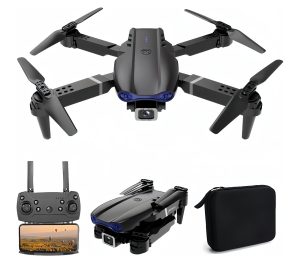In the rapidly advancing field of drone technology, it’s easy to get lost in the sea of acronyms and jargon, so here is our comprehensive drone acronym dictionary. This dictionary aims to provide clear and concise definitions for the most commonly used abbreviations and acronyms in the drone industry.
Whether you’re a novice drone enthusiast, a seasoned professional, or just someone interested in learning more about drone technology, this dictionary is a helpful resource. We’ve organized the acronyms alphabetically for easy navigation. Simply click on the acronym you’re interested in to read a brief explanation of its meaning and usage.
Remember, understanding these acronyms can help you make informed decisions when purchasing or operating a drone, and enhance your overall understanding of this exciting technology.
ARF (Almost Ready-to-Fly)
ARF drones typically require some assembly, but also offer room for additional customization. They may not include all the components you need, so make sure you know what’s included before you buy.
BNF (Bind-N-Fly)
BNF drones are fully assembled models that do not include a controller. You must attach your own controller to the drone before you can fly it.
CAA (Civil Aviation Authority)
The CAA is the statutory corporation which oversees and regulates all aspects of civil aviation in the United Kingdom.
CASA (Civil Aviation Safety Authority)
CASA is Australia’s national civil aviation regulator. It’s responsible for enforcing safety requirements and conducting safety education and training programs.
FAA (Federal Aviation Administration)
The FAA is the national aviation agency of the United States. It regulates and oversees all aspects of civil aviation in the United States.
FPV (First Person View)
FPV is a method of controlling a drone from the pilot’s point of view, as if he were on board the drone. This is typically accomplished using a camera and video link.
GPS (Global Positioning System)
GPS technology is often used in drones for navigation and positioning, enabling features such as homing and waypoint navigation.
HDR (High Dynamic Range)
HDR is a technology used in imaging and photography to create a greater dynamic range of brightness than is possible with standard digital imaging.
IMU (Inertial Measurement Unit)
The IMU is an electronic device that measures and reports a drone’s speed, orientation, and gravity using a combination of accelerometers and gyroscopes, and sometimes magnetometers.
LOS (Line of Sight)
Line of sight refers to the pilot’s direct visual observation of the drone. Many regulations require that drones remain within the line of sight of the pilot at all times.
RFID (Radio Frequency Identification)
RFID uses electromagnetic fields to automatically identify and track tags attached to objects, including drones. This technology is used in a variety of applications, such as tracking lost drones or inventory management.
RTF (Ready-To-Fly)
RTF drones are fully assembled and require no additional setup. These drones come with everything you need to get airborne right out of the box, including the drone itself, the controller, and a battery.
RTH (Return To Home)
RTH is designed to bring the drone back to its takeoff point automatically.
UAS (Unmanned Aircraft System)
UAS refers to the entire system, including the unmanned aircraft (UA), the control station, and the communications links between them.
UAV (Unmanned Aerial Vehicle)
UAV is a general term for any aircraft that is remotely piloted or flies autonomously based on pre-programmed flight plans. It is often used interchangeably with the term “drone“.
VTOL (Vertical Take-Off and Landing)
VTOL drones can take off, hover and land vertically. This feature allows these drones to operate in confined spaces and environments where a runway would be impractical or impossible.
